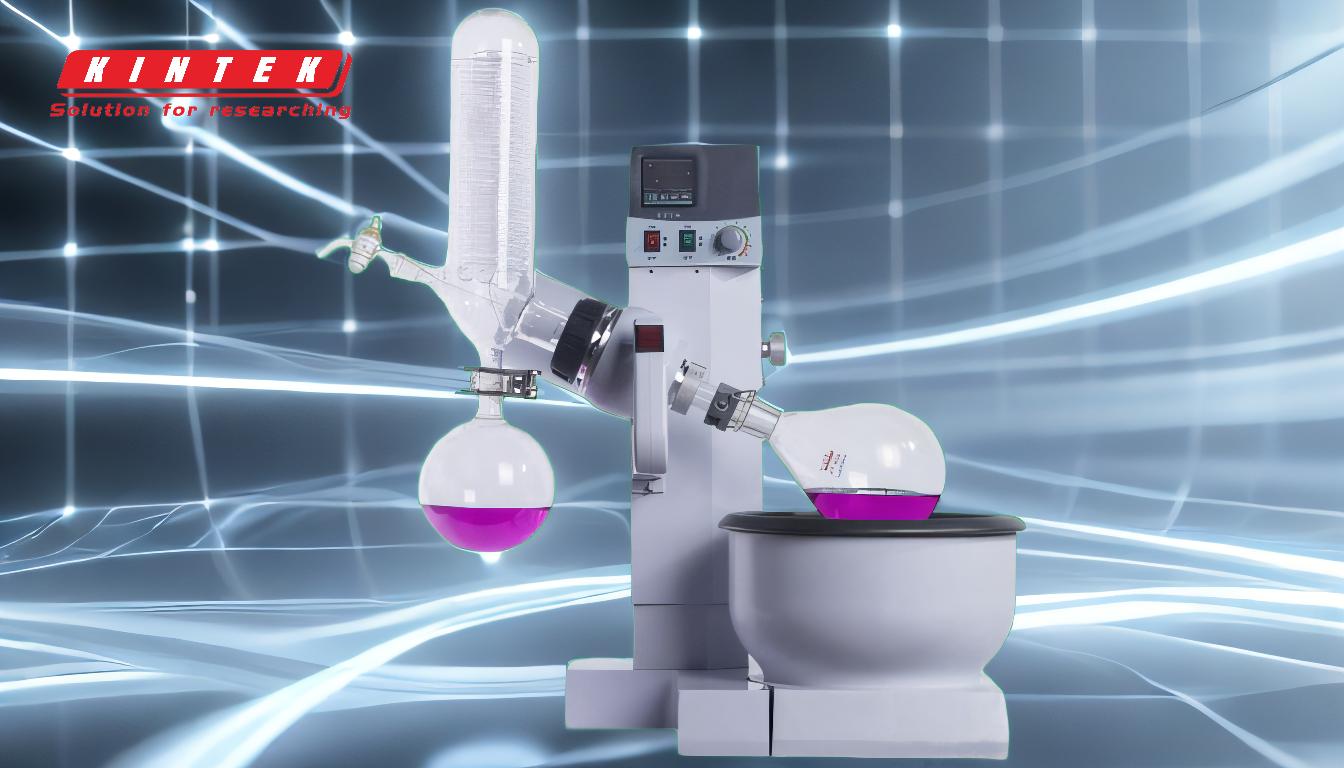Bumping in a rotary evaporator (rotovap) occurs when a liquid boils too rapidly, causing violent splashing or expulsion of the sample. This phenomenon is primarily caused by rapid heating or pressure reduction, leading to the formation of large vapor bubbles that push the liquid out of the flask. Bumping is more likely in smooth, clean glassware due to the lack of nucleation sites for bubble formation. It poses significant safety hazards and can lead to sample loss. Preventive measures include controlling temperature and vacuum levels, using bump traps, ensuring appropriate flask size, and introducing nucleation aids like boiling chips or capillary tubes.
Key Points Explained:

-
Definition and Mechanism of Bumping:
- Bumping occurs when a liquid boils too quickly, forming large vapor bubbles that violently expel the liquid from the flask.
- It is most common in smooth, clean glassware because the lack of nucleation sites makes it difficult for small bubbles to form. Once a bubble forms, it can grow rapidly, leading to bumping.
-
Causes of Bumping:
- Rapid Heating or Pressure Reduction: Sudden changes in temperature or vacuum levels can cause the liquid to superheat, leading to rapid boiling.
- Degassing of Liquids: Repeated heating and cooling cycles reduce the number of nucleation sites in the liquid, increasing the likelihood of bumping.
- Inadequate Surface Area: Overfilling the flask (more than half its capacity) reduces the surface area available for evaporation, exacerbating the risk of bumping.
-
Hazards of Bumping:
- Safety Risks: Violent splashing can cause burns, contamination, or damage to equipment. It also poses a risk to lab personnel.
- Sample Loss: Bumping can lead to significant loss of the sample, affecting experimental results.
-
Preventive Measures:
- Control Temperature and Vacuum: Gradually increase the temperature and adjust the vacuum strength to ensure a steady evaporation rate.
- Use a Bump Trap: A bump trap or condenser array can capture splashed liquid, preventing contamination and loss.
- Proper Flask Size and Volume: Ensure the flask is not overfilled; the sample volume should be less than half the flask's capacity to provide adequate surface area.
-
Add Nucleation Aids:
- Boiling Chips: These provide nucleation sites for bubble formation, reducing the risk of bumping. However, they must be replaced after each heating cycle as their pores can become clogged.
- Capillary Tubes: Sealed capillary tubes can be added to the solution to create nucleation sites and can be easily removed after use.
- Stirring: Continuous stirring creates a vortex that breaks up large bubbles and introduces smaller bubbles, reducing the likelihood of bumping.
-
Special Considerations:
- Homogeneous Phases: Ensuring the sample is in a homogeneous phase before evaporation can help achieve a more uniform boiling process.
- Repeated Heating Cycles: Each heating cycle degasses the liquid further, so additional precautions (e.g., new boiling chips) are necessary for subsequent boils.
By understanding the causes and implementing preventive measures, bumping in a rotovap can be effectively mitigated, ensuring safer and more efficient laboratory operations.
Summary Table:
| Aspect | Details |
|---|---|
| Definition | Rapid boiling causing violent splashing or expulsion of the sample. |
| Causes | Rapid heating, pressure reduction, degassing, or overfilled flasks. |
| Hazards | Safety risks (burns, contamination), sample loss, and equipment damage. |
| Preventive Measures | Control temperature/vacuum, use bump traps, proper flask size, nucleation aids, and stirring. |
| Special Considerations | Homogeneous phases and precautions for repeated heating cycles. |
Need help preventing bumping in your rotovap? Contact our experts today for tailored solutions!




















